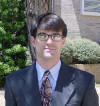|
Creativity Begins With Me by |
Creativity is excitement. Working with young musicians in elementary schools provides elementary music specialists plenty of opportunities to be creative. Finding creative solutions (i.e., thinking on your feet) to pedagogical problems are part of the specialist’s ever growing “bag-of-tricks.” It is important to think creatively when working with any age student, especially with those at the elementary level.
Creativity should also be considered in the context of the specialist’s musicianship. Since one of the things that we try and teach, or nurture, in children is musical creativity, it seems appropriate that we should demonstrate, model, musical creativity for them. Usually this is done through “think-alouds.” Essentially, think-alouds provide children the opportunity to hear “out-loud” how musicians approach a musical problem or generate a musical idea. Providing this model allows children to look inside another musician’s head and to begin to understand the process and critical thinking associated with making music.
Another opportunity to provide children with a creative musical experience is to write musical accompaniments for them. Somewhat different than the first two, writing accompaniments allows specialists the opportunity to “unleash” their musicianship in a practical and authentic way for their students. From a practical standpoint, writing accompaniments for a specific set of children almost guarantees success because the parts will be written with the children’s strengths and weaknesses in mind. Composing an accompaniment is also a way for specialists to share their musical talents and their love of music with their students in a more personal way. Students love to have things written for them. Composing accompaniments is also a great way to recharge specialists’ “musical batteries” by tapping into their creative spirit (i.e., Covey’s “Sharpening Your Saw”).
Here are some suggestions on how to begin to write practical accompaniments for your young musicians.
-
Keep in mind the instruments with which you must work. Obviously you will not want to write a bass xylophone part if there is none.
-
Four-part harmony can be played very effectively on bass, alto, and soprano xylophones, alto and soprano glockenspiel, and metalophones. Remember your two years of theory. You can write very simple tenor and alto parts that require students to play three or four notes. Bass parts are a little trickier since they tend to have many more leaps and skips than tenor and alto parts. The melody should be one of the easiest to learn since the children will have already learned it through singing.
-
Write the lower three voices as you would write four-part harmony. The best keys to use are C, D, F, and G (and their relative minors).
-
Before introducing the accompaniments, make certain that the children know the song, cold. When introducing an instrumental part, I always associate the new part to the melody and words they already know. While you can teach them the parts through traditional notation, I have also used icons and rote teaching. Children do not have to read every spot on the page to make wonderful music. At a very early age, they can play some fairly sophisticated music.
-
Do not forget chromatic harmonies. If you have choir chimes, use them. Many wonderful harmonies can be written for young musicians. Take every opportunity to expand their tonal pallet.
-
When writing accompaniments envision the finished product as something that requires no adult assistance. It is wonderful to see children making and enjoying music all by themselves -- musical independence.
-
Once the accompaniment is written and the children are having success in performing it, talk about why you chose a certain harmony or a particular tempo. Let the children into you head, as it were. You are a composer. Another idea is to team up with another music specialist and become the composer for the other specialist’s children.
-
When selecting a song, do not forget about the younger children. There are many quality songs that are easy for first and second grade children to sing that can be transformed into a choral musical experience with the addition of instrumental accompaniments. It is wonderful to see older elementary musicians accompanying younger musicians.
-
Collaborate with your young musicians. Have them assist you in composing the accompaniments they will play.
-
Children need to see that real people compose music for the enjoyment and pleasure of others. While music does exist in books, it must exist in humans, first. As musicians, music is a vital part of our lives and providing children the opportunity to see that we are actively involved in making music is an essential component, and often forgotten, of their music education. By demonstrating that active musical involvement (e.g., composing) is part of our rich and varied lives, children may come to the realization that music can, and should, be a part of their lives also.
| If you would like to be added to the TSMP Email Mailing List and receive periodic notifications of new articles and updates to this website, then please email TSMP.
The Texas School Music
Project is a source for ideas and information
concerning pedagogical
practices in the music classroom or rehearsal hall. The TSMP is a service provided to
all music specialists by the faculty
of
the Department of Music
at Stephen F. Austin State University. Copyright © 2002, Department of Music at Stephen F. Austin State University |
